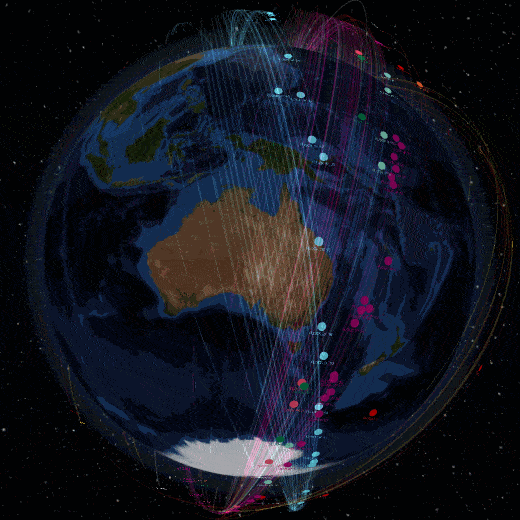How often should I get a satellite pasture measurement
Are you wondering how frequent satellite pasture measurements are? Look no further, as this is what this article covers.
There are high chances that you'll get consecutive days worth of satellite pasture measurements.
How can I be so confident?
The average frequency of satellite pasture measurements = 3.3days across the Pasture.io customer base. Yes, you read right, more measurements per week than sleep-ins!
We tap into over 150 satellites that are orbiting the earth each and every day, just check out the image below:

These satellites are impressive and provide anything from atmospheric conditions, through to different colour spectrums and into other satellite tech that is for another article.
With any satellite imaging, clouds will determine how often you'll get a satellite pasture measurement. This is why we buy premium satellite images, as the premium satellites fly over once a day, thus increasing the likelihood of measurements within the desired timeframe for measuring pasture.
If you look up, try to look around for clouds and not just directly above.
We are the leading company when it comes to delivering frequent pasture measurements. We don't throttle the number of readings you receive like companies such as LIC Space might. What we do is maximise every opportunity possible to provide you with the best experience.
Frequently asked questions
If it's cloud-free over my farm, why wouldn't I get an image?
- If you happen to look up at the wrong time that the satellite passes over, it may be cloud-free. There is a window of a few hours around mid-morning that the satellites usually pass over.
Why don't the satellites pass over in the afternoon as well?
- Good question, this appears to be a business decision for the satellite image provider who has to balance costs involved with photographing the entire earth daily. I can imagine that doubling the image capture frequency of the entire earth would increase costs significantly. Furthermore, the afternoon light is often of 'poorer' quality than the morning light. Imaging the earth at the same time every day increases the consistency of the images from day-to-day.
Yesterday seemed cloud-free in the morning and I didn't get a reading?
- If there were no clouds in the sky or on the horizon you would have got a reading. We purchase imagery for your farm, however, how we call for this imagery is to look in a 25km2 tile. If this tile has a lot of cloud over one half and your farm is in a clear spot, this can sometimes trigger the filters to deem the imagery as unusable. This is an area we are in constant conversations with the image supplier about. Again this comes down to processing costs for the supplier who are processing imagery of the entire earth each day.
To put the above into perspective, the swaths the satellites cover in one image are 250km2. These are then broken into 25km2 tiles. Your farm may only be 1-5km2 in size. Then the processing of these images is with 3m2 pixels as explained here.
Satellite pasture measurement resources
Here are some resources to help you understand Pasture.io's satellite pasture measuring:
